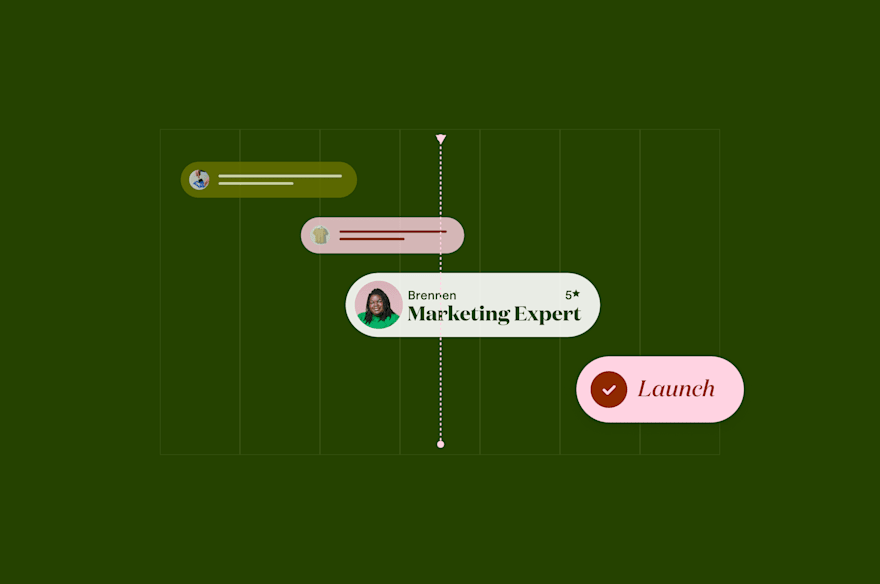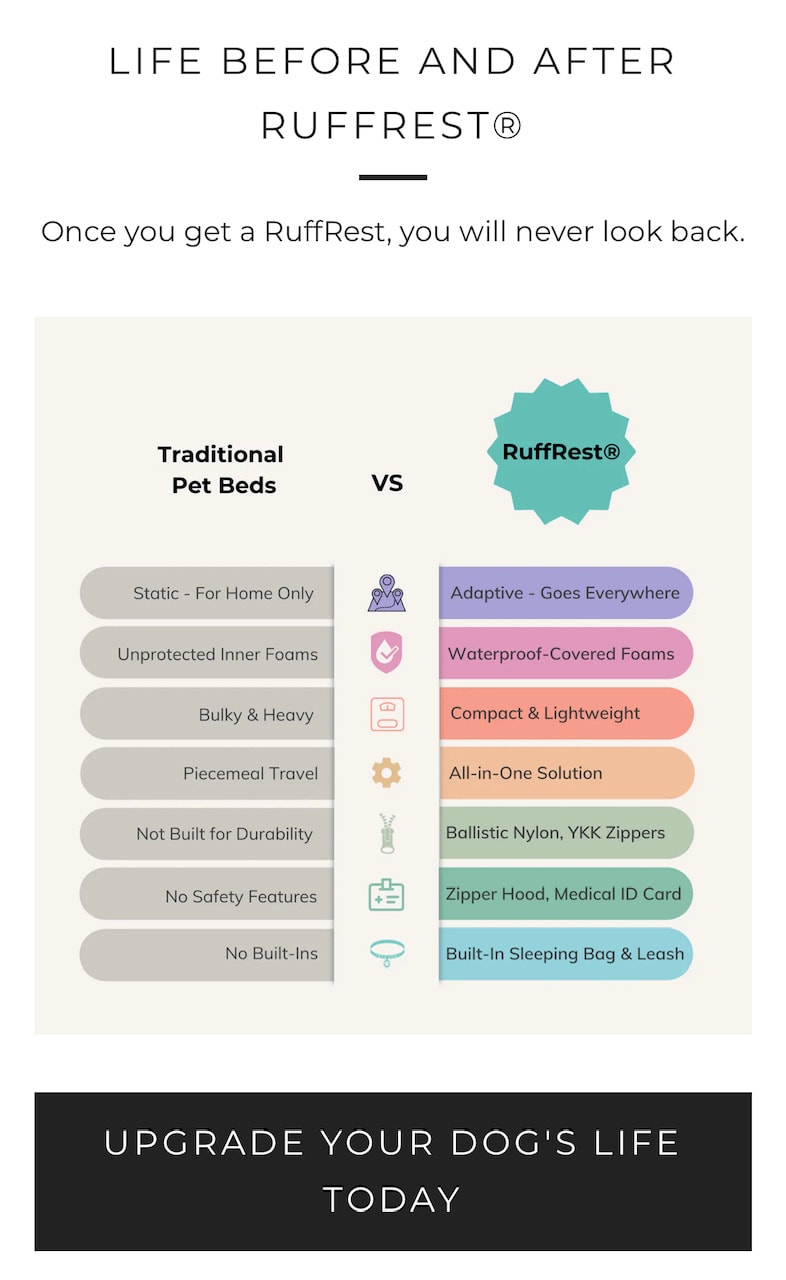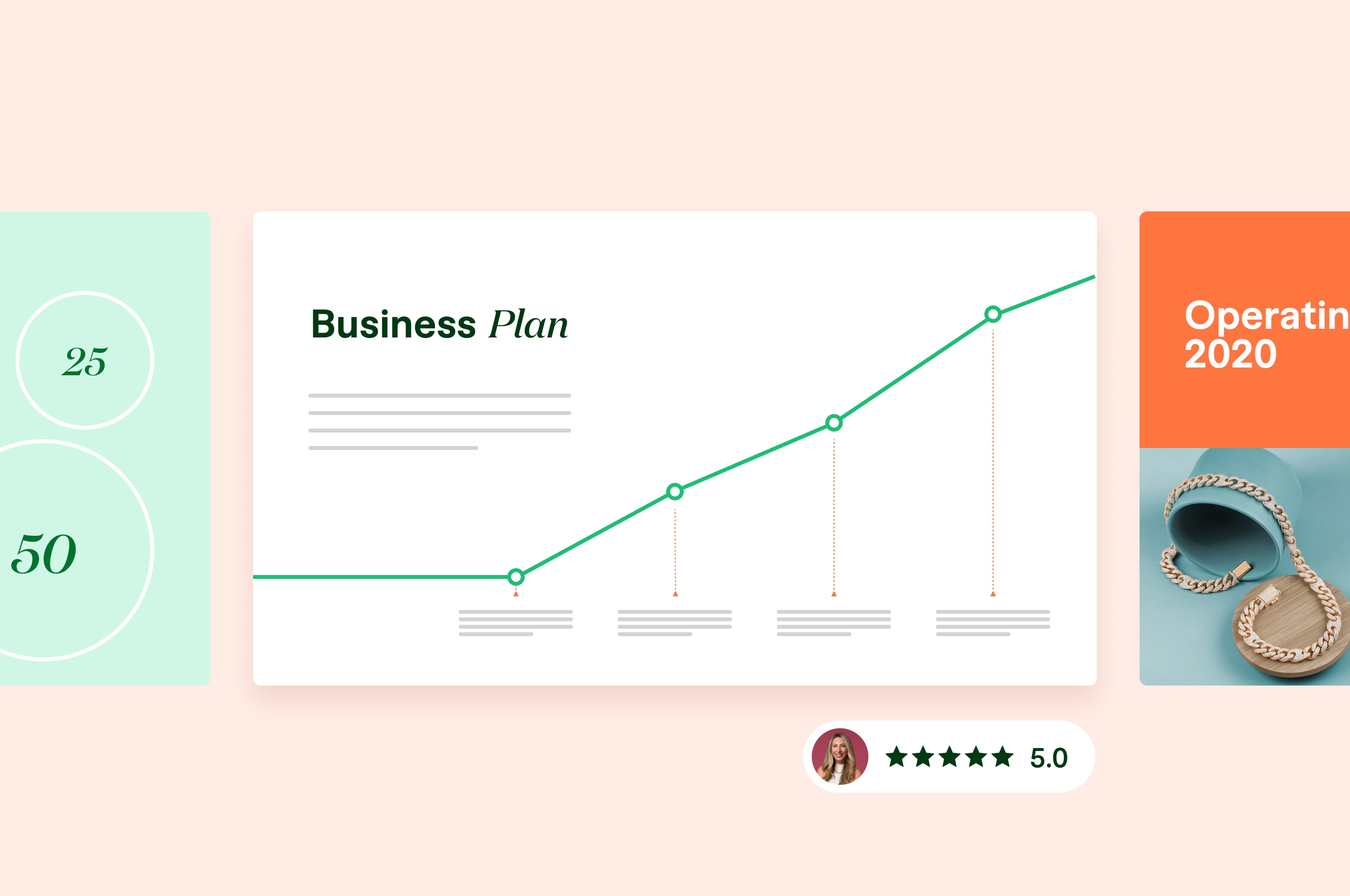6 Steps to Build a Successful Product Launch Plan for 2024 (+ Checklist)
Make your next product launch a success by developing a product launch plan using these 6 easy steps.
 July 31, 2023
July 31, 2023 11 minute reading
11 minute reading
Transforming an idea from an abstract concept into a real product can be thrilling, but the logistics involved in doing so often make it a stressful endeavor. One way of easing that stress and giving a product the best chance of success is proper preparation.
By following a product launch plan, you can streamline the process and ensure everyone involved knows what to do and in what order. Follow these six steps to build your successful product launch plan, and download our accompanying checklist to make things even easier.
What is a product launch plan?
A product launch plan is an essential document for any business looking to successfully launch a new product. A product launch plan acts as a roadmap that includes details about strategies, goals, and tasks needed to ensure a smooth launch.
Some important elements to include in a product launch plan are:
Product information
Go-to-market strategy
Marketing communications
Milestones
Hire an ecommerce expert to help with your product launch
1. Conduct market research
Market research provides crucial data about the market landscape, customer needs and preferences, competitors, pricing, and channels needed for reaching potential customers. Does your ecommerce business idea already exist, and if so, how will you position your product to be better and more attractive than competing products?
“One thing all successful product launches have in common is a real consumer need for the product in question. However exciting or innovative a product is, if people don’t need it, they won’t buy it,” says Chad Price, founder of multiple lifestyle businesses. “It is absolutely vital to identify a genuine consumer need and strive to meet it. This need isn’t always obvious, and the consumer themselves may not even be aware of it.”
If you don’t investigate the current state of the market and your product’s viability—the demand for said product, amount of competitors, pain points customers currently face—your product launch is likely to fail.
To conduct market and customer research, consider:
Sending out surveys
Running focus groups
Interviewing industry experts
Talking to customers
Analyzing industry reports
Looking at competitor websites
Conducting keyword research
When interpreting and gathering this information, look at qualitative and quantitative data. Pay attention to opinions, numbers, and trends to get a holistic view of the target market. With a solid understanding of customers’ needs and preferences, you can appropriately position your product in the marketplace.
This first step is the backbone of your product launch plan. Research is key to then determining your price and selecting the right channels to reach customers.
“I did keyword research to see how many people were looking for things like “glasses thick lenses” on the web every month, and what their associated searches were,” says Charlotte Dickinson, founder of eyewear brand Minus Eyewear. “Other key data I pinned down included: how often do people replace their glasses, how often should you get your eyes tested, how many glasses are sold every year, and my key insight was what percentage of the population have high prescriptions and what that data spread looks like.”
Minus Eyewear’s value proposition is that it’s the only brand making glasses frames for thick lenses.
2. Define your target audience
Successful ecommerce brands don’t launch a product and expect it to be embraced by the vast, ever-growing network of online shoppers. You need to know who you’re selling to and focus your efforts on those customers. If you have a solid understanding of who your target audience is, you won’t waste valuable marketing dollars appealing to the wrong shoppers.
To start identifying your target audience, look at factors based on demographics and psychographics:
Age
Gender
Location
Lifestyle
Marital status
Interests
Social class
Don’t create a target audience that’s too large. “Go big or go home” doesn’t apply in this scenario. While it’s OK to have a niche, your target audience shouldn’t be too small either. Many businesses develop customer personas to better understand the target market and segment campaigns appropriately.
“I came up with three buyer personas, hoping to cover the three major stages of a developing writer,” says Ted Galdi, founder of the educational platform Write Gripping Stories. “I tried to tap into the frustrations people in these stages face and how my educational platform would help them overcome those challenges in a relatively short amount of time.”
Defining buyer personas allows you to roll out a launch that’s affordable and effective. Interview consumers that fit these profiles to get an even deeper insight into their wants, issues, and behaviors. Your entire brand should directly appeal to these personas—including everything from your business logo to your brand’s color scheme.
Update these personas regularly based on new research insights so that your brand is only engaging with audiences who are likely to be interested in your products.
3. Set SMART goals and objectives
Product goals and objectives should be tailored to your business, aligning with your overall mission, strategy, and ecommerce business plan. When creating these goals, it’s important to keep them SMART—specific, measurable, attainable, relevant, and timely.
Everyone in your business should be aware of your goals to ensure everyone is working toward the same outcome. SMART goals make it easier to focus on what truly matters to your business. After a product launch, assess the goals you reached and those that came up short to better strategize for the next product launch.
Examples of potential SMART goals or objectives for launching a new product include:
Increasing website traffic by X% in the first six months
Improving customer satisfaction scores by X%
Increasing sales by X% in the first month
Building an online presence and growing brand awareness
Increasing sign-ups by X% in the first three months
Consider your short-term and long-term objectives when crafting your goals and establish measurable metrics so you can track your progress. Make goals realistic and take into account the level of investment you’re putting into the product launch, including time, money, and resources. And remember, not every product launch needs to focus primarily on sales.
“It wasn’t just about the sales figures. Sure, they were important, but we also kept a keen eye on our brand recognition and the engagement levels on our social media posts,” says Harry White at NBA Blast. “After all, we weren’t just looking to sell a few caps and jerseys—we were aiming to create a loyal community of NBA merch lovers.”

NBA Blast seeks to create a community around the NBA, as evident by its homepage.
4. Develop a launch strategy and timeline
After you define your goals, develop a timeline with key milestones and assign tasks and responsibilities to team members. This helps keep everyone on track and ensures that you execute the launch in a timely manner with no delays or rescheduling.
Only 40% of products make it to market. Of those 40%, only 60% will generate any revenue at all. It’s vital that you define your launch strategy and timeline if you want to be among the 40% that actually make it to launch day.
Launch strategies consist of all the nitty-gritty details needed for a successful product launch day. It’s where you’ll define:
Pricing
Timeline
Messaging and positioning
Distribution channels
Key stakeholders
Marketing plan
All launches have three phases. Deadlines need to be set for each milestone and for the associated tasks:
Pre-launch. This is the time before your product is out in the digital marketplace. Example tasks include setting up your ecommerce website, preparing marketing materials, building and drafting email lists, and setting the price.
Launch. The launch stage is when you make your product public. While most measuring comes later, you can start by keeping track of how many sales or signups you made on launch day, as well as ensuring that everything is running smoothly.
Post-launch. The work isn’t done, even when your product is live. Continue to promote across appropriate channels, gather feedback, and look at results to better prepare for your next launch.
The launch timeline can be one of the hardest things to get right for new businesses. Even if things go wrong—such as not considering the competition, launching too early, or failing to allocate enough resources to marketing efforts—you learn from your mistakes.
“Affordability was key in my product identity. The majority of caftans in the market were priced over $100 and prohibitive to people just trying out this kind of clothing for the first time,” says Dudley Beene, founder of Studley Duds. “I chose a price that was more than half as inexpensive and felt like an entry point for new customers. Choosing $45 as our set caftan price has allowed customers to shop on impulse and become loyal fans in the process.”

Studley Duds makes it clear on its About Us page that it launched its product to solve the cost issue found in the marketplace.
5. Create compelling marketing materials
A marketing strategy will make or break your product launch. If marketing materials fall short, you risk your product going unnoticed, as your target audience fails to see that there’s a new product on offer.
Optimize your content with targeted keywords, visuals, and language. Make sure all your content aligns with and includes your ecommerce brand’s identity—such as the logo, typography, and voice. It’s important to select the correct medium for your message and develop a marketing mix that incorporates diverse touchpoints.
The following are examples of marketing materials to include in your launch:
Social media posts. Once you’ve identified where your target audience likes to hang ou—TikTok, Instagram, Facebook—publish social media posts that emphasize the key elements of your product.
Email campaigns. Segment your email list and send out different copies that provide an overview of your new product, according to persona.
Press releases. Reach as large of an audience as possible by capturing potential customers’ attention with press releases.
Influencer marketing. Identify micro-influencers in your niche and reach out for potential partnerships to gain exposure.
Landing page. Craft a dedicated landing page for your product launch—if you use an ecommerce hosting provider, this is easy to do.
Content creation is a time-consuming task, which is why many ecommerce business owners choose to work with freelancers. Expert freelancers can assist with social media marketing, influencer marketing, email copy, and more.

Fiverr freelancer Vasily Kichigan creates content for businesses’ Instagram pages, helping them achieve growth and visibility.
“Facebook, so far, has been the best driver of sales,” says Leena Chitnis, founder and CEO of dog bed brand Timberdog. “Instagram has been the best in terms of building brand, building community, and telling our story visually.”

Timberdog’s content was designed by graphic artist Jenny Lai.
6. Measure product launch campaign results
There’s plenty of data to track following a product launch, and the metrics can be overwhelming if you’re unsure which numbers to focus on. With the correct data, you can get an insightful look at the success of your product launch and how well you met your goals.
Pay attention to metrics such as:
Website traffic
Sales figures
Customer feedback
Engagement rates
Views, shares, and clicks on any links
CPC rates on ads
CTR on emails
Analyzing this data is important to understand what worked and what didn’t. Use tools such as A/B testing or customer surveys to gain further insight into customers’ wants and needs.
Likely, you’ll want to plan another launch soon. Your first product launch should leave you well-equipped with lessons learned to create even more effective strategies for any future product launches.
With the right data analysis in place, companies can identify opportunities for improvement in both their products and their marketing campaigns.
“The most important metrics to me were the ones beyond vanity,” says Chitnis. “I looked for engagement (people talking in the comments, emails sent to me, how my LinkTree performed), as well as conversion rate (sales).”
Optimize the process with a checklist
Follow a step-by-step checklist so you don’t miss any crucial tasks or stages in the product launch process. A checklist ensures that all the steps necessary for a successful launch are completed on time and in the correct order.
Checklists help you keep track of deadlines, notice any potential issues, and allow you to stay on schedule. Distribute your checklist to all members of your team, so everyone is aware of their personal tasks and responsibilities.
Download our product launch checklist to ensure a smooth, successful launch.
Work with freelancers to ensure a smooth launch
Freelancers can help out during any stage of your product launch, whether you need help integrating themes into your online store or don’t have access to the tools needed for a successful ecommerce storefront. Offloading some of that work to an expert third party lets you stay focused, relieve stress, and direct your attention to more important matters.
Sign up for Fiverr to access a large marketplace of freelancers who are specialists in everything from market research to ecommerce SEO. Bring your product idea to life and execute a successful launch with Fiverr freelancers.




